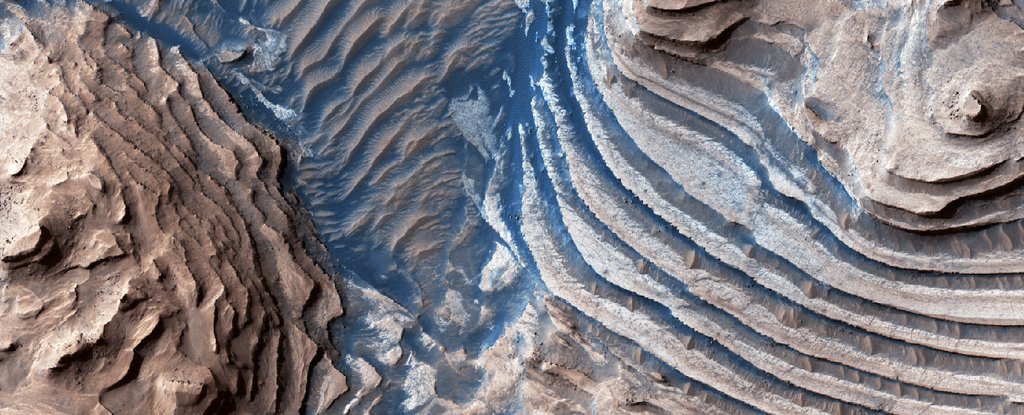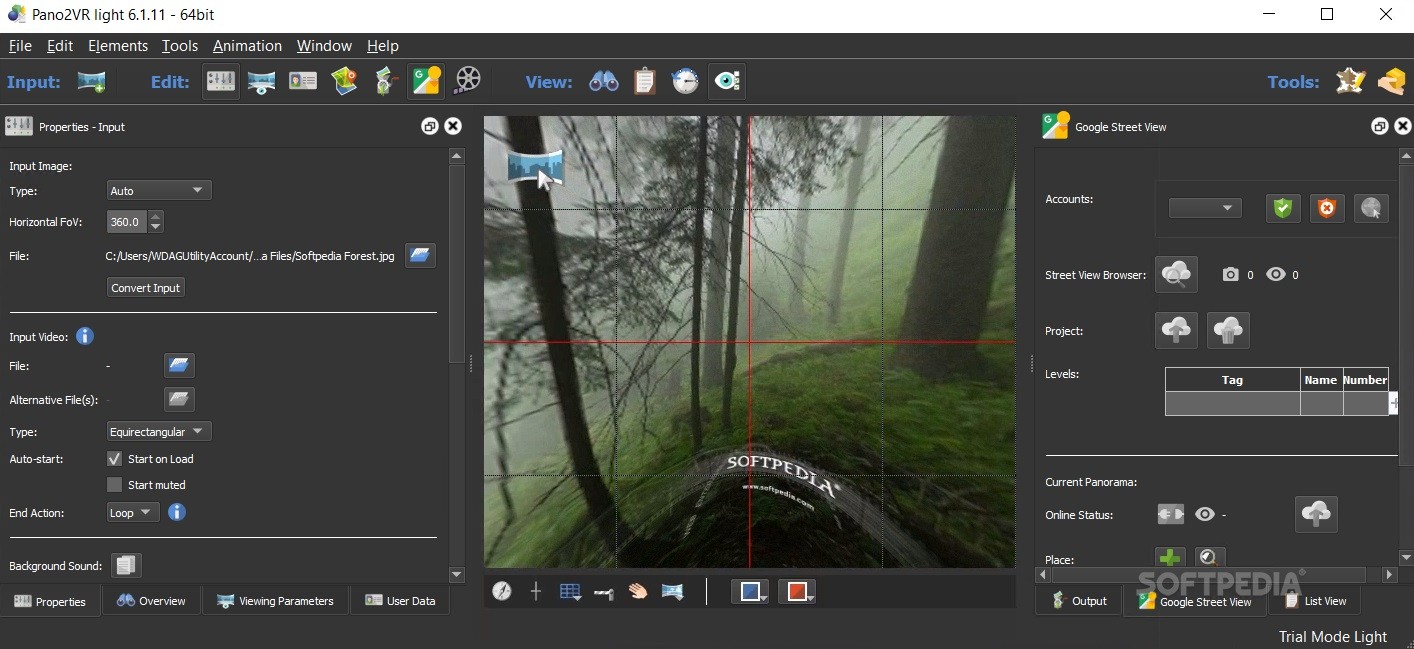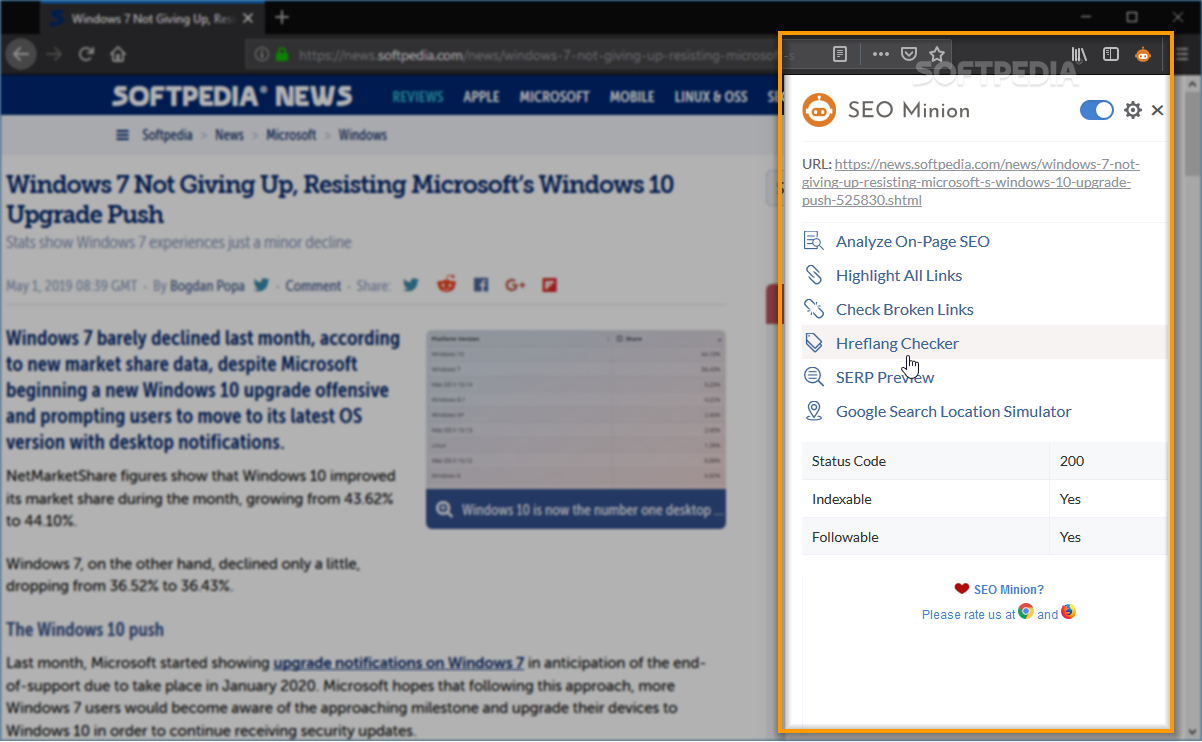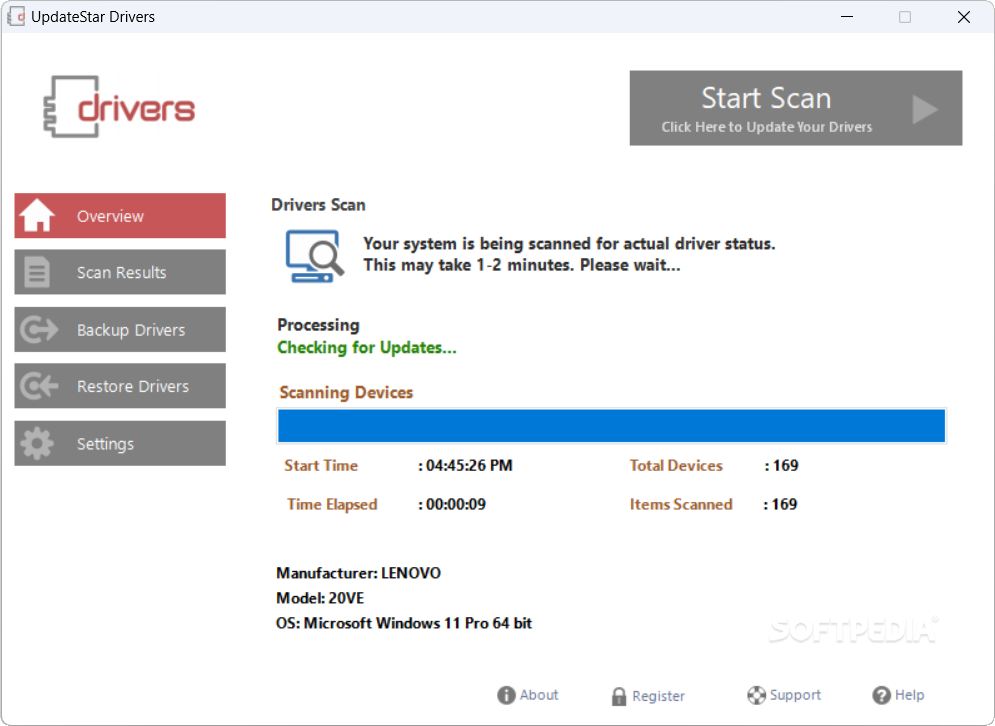
HiRISE (High Resolution Imaging Science Experiment) instrument at NASA Mars Reconnaissance Orbiter (MRO) has given us a constant stream of images of the Martian surface. It has been in orbit around Mars since March 2006 and has largely survived the expected duration of its mission.
One of the last Hi-PODs, or HiRISE Pictures of the Day, is the sedimentary rock eroded on Mars.
 Meridiani Planum from the Mars region (NASA / JPL / UArizona)
Meridiani Planum from the Mars region (NASA / JPL / UArizona)
The picture is of Meridiani Planum Region of Mars, near the planet's equator. This is the same region that the NASA Opportunity rover landed in 2004.
The image is from inside a massive impact crater, although the edges of the crater are on the outside of the image.
 A MOLA topographic map of Mars. The top image is that of the crater on the far right, in the white square. (NASA / MOLA / USGS)
A MOLA topographic map of Mars. The top image is that of the crater on the far right, in the white square. (NASA / MOLA / USGS)
The rock inside the crater was deposited by wind or water. Sediments covered the bottom of the crater, but the wind eroded them over time.
Since the sediments settled in layers, the subsequent erosion revealed a pattern similar to a staircase. The sediment deposition was once much larger, but now that is all that remains.
The Meridiani Planum region of Mars is remarkable for several reasons, in particular the presence of hematite. Hematite is linked to the presence of liquid water. It can precipitate out of the water and form sediment at the bottom of a body of water, or it can form from hot springs. This is why the Opportunity rover was shipped there.
Opportunity discovered spherules of hematite called "blueberries", indicating that water was once present. The Discovery made a lot of noise at the time.
 Blueberries from Mars are iron-rich mineral concretions created during periodic periods of wet weather on Mars. (NASA / JPL / Cornell)
Blueberries from Mars are iron-rich mineral concretions created during periodic periods of wet weather on Mars. (NASA / JPL / Cornell)
As for the Mars Reconnaissance Orbiter and its HiRISE instrument, it remains solid. It is not just an orbiting camera and other instruments, it is a communication link for missions on Mars. It is a critical high speed data relay for Curiosity, and soon Perseverance.
Check-out MRO Image Catalogand lose yourself for a moment in the Martian images.
This article was originally published by The universe today. Read it Original article.



